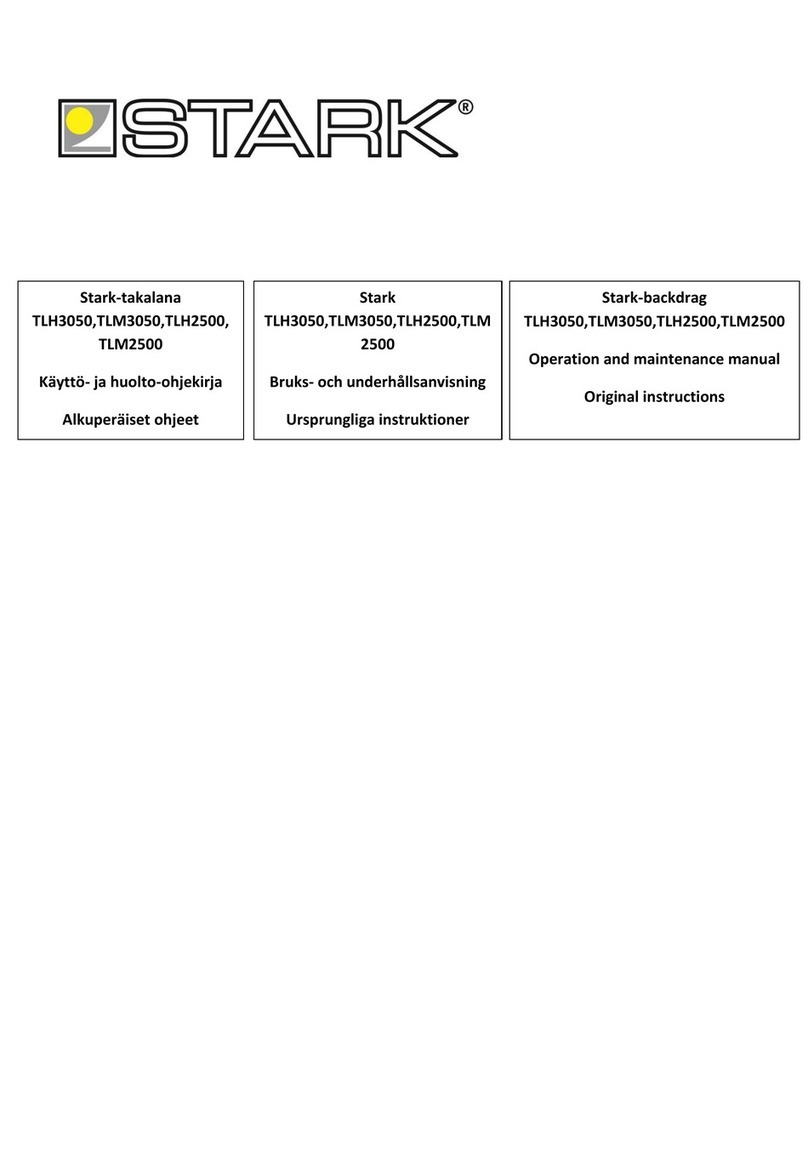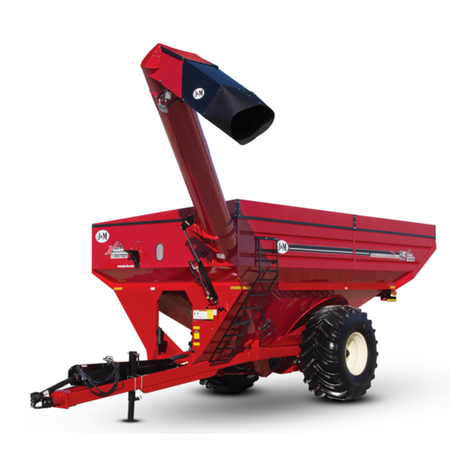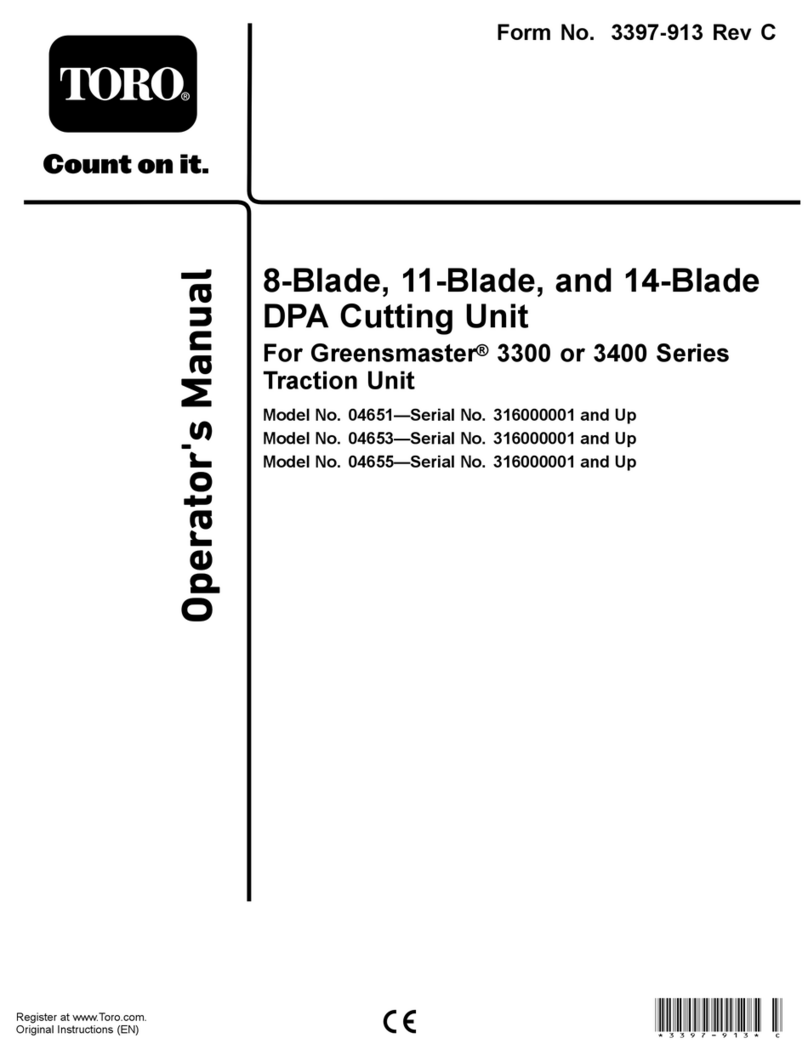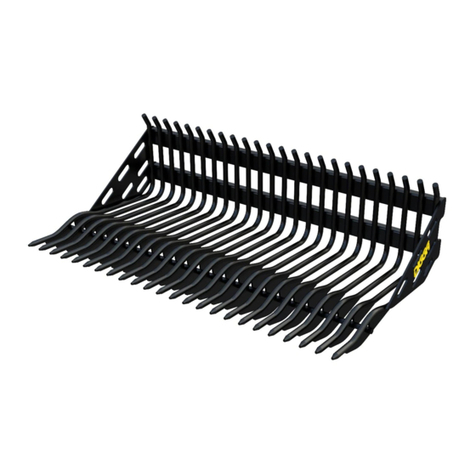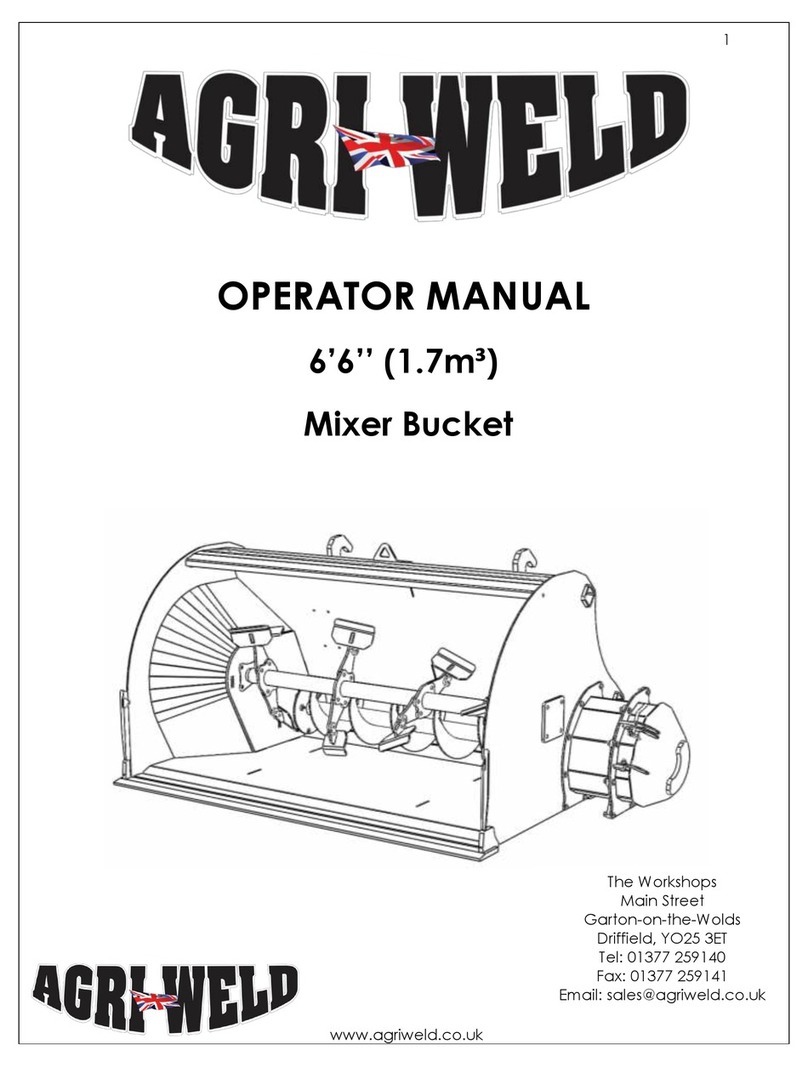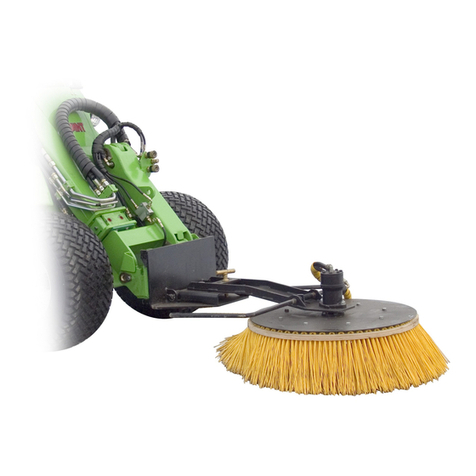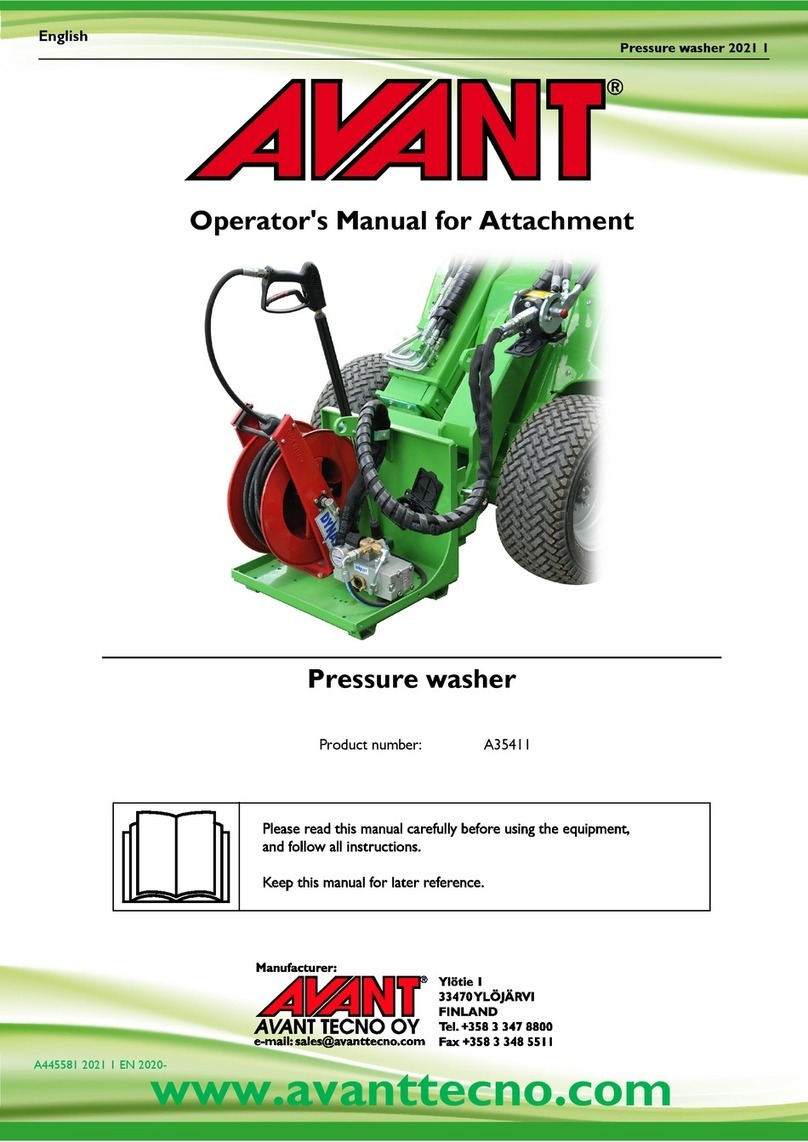Stark U-AURA Operating instructions

Original
Operating and maintenance
manual
Multipurpose bucket

Sivu 2 / 19
General
Congratulations on the purchase of your STARK Multipurpose bucket!
For us, the long lifecycle and efficiency of your new equipment is a priority. To keep the multipurpose bucket in top
working condition, read this manual carefully before using the equipment.
STARK products are engineered and manufactured in Finland, and each of them is equipped according to the needs of
the customer.
Never let anyone operate or maintain the device without reading this manual carefully! Always make sure that safety
precautions are observed in use and maintenance. Keep this manual for future reference and make sure to hand it over
to a new owner.
The cornerstones of the product development of STARK attachments are quality, durability and economy. The products
are engineered to be high-performing, safe and durable in professional use. Any feedback on our products is welcome
and contributes to the further development of our products. If you have any questions about the use or maintenance of
the bucket, please contact us by e-mail: info@stark.fi
Visit our webpage www.stark.fi for the complete product range, including new products.
The manufacturer reserves the right for structural and technical changes without prior notice. Therefore, some pieces of
information given in the manual may have changed after printing this manual.
Read before use
Make sure you know your equipment before you start using it.
Equipment may be operated only by an individual who is thoroughly familiar with its use.
All operators must be properly instructed before use and maintenance of the equipment. Use by
individuals with insufficient instructions may pose serious risks to the operators themselves, to the
environment and the equipment.
When coupling the attachment to the base machine, make sure:
-that all locking cotters are intact and in order
-there is no pressure in the hydraulic system
-that hydraulic hoses are intact
-there is no skin contact to hydraulic oil when connecting hydraulic hoses
-not to pull by the hydraulic hoses, but only by the hydraulic fitting
During operation, pay attention to:
-safe, appropriate travel speed
-other traffic, people and animals
-danger zones and objects that block your view
-children
NEVER use the machine if there is someone in the danger zone.
NEVER go under unsecured the attachment.

Sivu 3 / 19
Table of contents
General.................................................................................................................................................2
Read before use ...................................................................................................................................2
1. DECLARATION OF CONFORMITY......................................................................................................4
2. PURPOSE OF USE..............................................................................................................................5
3. SAFETY PRECAUTIONS......................................................................................................................5
4. IDENTIFICATION INFORMATION AND SPAREPARTS ........................................................................6
4.1. Identification plate ............................................................................................................................ 6
4.2. Maintenance services........................................................................................................................ 6
5. MAIN PARTS OF THE MULTIPURPOSE BUCKET................................................................................7
6. USING THE MULTIPURPOSE BUCKET ...............................................................................................8
6.1. Attaching the multipurpose bucket the base machine..................................................................... 8
7. OPERATING THE MULTIPURPOSE BUCKET.......................................................................................9
7.1. Operating instructions....................................................................................................................... 9
7.2. Adjustment of the wing’s height ..................................................................................................... 11
7.3. Adjustment of the blades ................................................................................................................ 11
7.4. Adjustment of the bucket blades .................................................................................................... 13
7.5. Detaching the bucket spreader ....................................................................................................... 13
7.6. Transferring the bucket spreader.................................................................................................... 13
7.7. Accessories ...................................................................................................................................... 13
8. MAINTENANCE OF THE MULTIPURPOSE BUCKET..........................................................................14
8.1. General safety precautions for the use and maintenance.............................................................. 14
8.2. Tightening torque............................................................................................................................ 14
8.3. Daily maintenance........................................................................................................................... 14
8.4. Maintenance after first 10 hours of operation ............................................................................... 14
8.5. Maintenance at 50-working hour intervals or on a weekly basis ................................................... 15
8.6. Lubrication points............................................................................................................................ 15
9. HYDRAULICS...................................................................................................................................16
9.1. 4- and 5-hose hydraulics.................................................................................................................. 16
9.2. 3-hose hydraulics............................................................................................................................. 17
9.3. Adjustment of the safety valves...................................................................................................... 18
10. WARRANTY POLICY ......................................................................................................................19

Sivu 4 / 19
1. DECLARATION OF CONFORMITY
The original manufacturer’s EC declaration of conformity:
Generic product name: Multipurpose bucket
Models: SL 2000/3200, SL 2200/3600, SL 2350/4150T, SL 2300/3700, SL 2500/3900, SL 2500/4300, SL 2600/4400,
SL 2600/4800, SL 2800/5000, SL 3000/5200
Manufacturer:
Lametal Ltd
Kaskenviertäjäntie 2 73100 LAPINLAHTI, Finland
tel. +358 17 731 565
Declares that the above-mentioned equipment meets the provisions of Directive 2006/42/EC on machinery and, where
applicable, comply with the standards
•SFS-EN ISO 12100-1,
•SFS-EN ISO 12100-2
•SFS-EN 1050
The person authorized to compile technical documentation:
Lassi Mehtonen
Managing director
Kaskenviertäjäntie 2
73100 Lapinlahti, FINLAND

Sivu 5 / 19
2. PURPOSE OF USE
Multipurpose buckets are intended for removing snow from streets and yards of different size. It also can be use loading
snow or other light material.
Using to plow or move heavier material than snow is prohibited and will terminate warranty.
3. SAFETY PRECAUTIONS
Make sure you know your equipment before you start using it. Equipment may be operated only
by an individual who is thoroughly familiar with its use.
Before connecting hydraulics to the base machine, make sure that:
-there is no-one between the attachment and the base machine
-the base machine is turned off and the parking brake is on.
When coupling the attachment to the base machine, make sure that:
-all locking cotters are intact and in order
-hydraulic hoses are intact
-there is no skin contact to hydraulic oil when connecting hydraulic hoses
-you do not to pull by the hydraulic hoses, but only by the hydraulic fitting.
During operation, pay attention to:
-safe, appropriate travel speed
-other traffic, people and animals
-danger zones and objects that block your view
-children
-use of turn signal when driving
NEVER use the machine, if there is someone in the danger zone
NEVER go under the attachment
During maintenance, the hydraulics of the base machine MUST be turned off. The base machine MUST also be turned
off and the parking brake MUST be applied. The equipment must be properly supported, if maintenance can only be
performed by going under the equipment. Never go under the equipment if it is not properly supported.
Daily maintenance:
-check general condition of structures, make repairs if needed
-check the hydraulic hoses and fittings, and replace damaged parts
After every 50 hours of operation:
-lubricate points specified in later section of this manual
-check all bolts and nuts for tightness
Check all bolts, nuts and hydraulic fittings for tightness after the first day of operation!
If the equipment is not likely to be used for a longer period, clean it thoroughly after use and lubricate as instructed.
WARNING! Pressurized hydraulic hoses and components!

Sivu 6 / 19
4. IDENTIFICATION INFORMATION AND
SPAREPARTS
4.1. Identification plate
Identification plate is placed on the side of the equipment. The plate includes contact information, machine type, year of
manufacture, serial number and weight. (See an example of an identification plate in picture 1 below).
The first four numbers in the serial number indicate the month and year of manufacture (month first). The remaining five
numbers constitute the machine tracking number, which is stored in the manufacturer’s database (13971 in the example
below).
Picture 1. Identification plate
Take down the machine type and the serial number of your multipurpose bucket:
Product and model _______________________________Serial number___________________________________
4.2. Maintenance services
When replacing parts, use original, manufacturer spare parts only. By using original spare parts, you ensure dependable
operation of the multipurpose bucket and comply with the warranty policy. To facilitate the supply of spare parts, always
inform the manufacturer/retailer of the model and serial number of the multipurpose bucket (marked in the identification
plate) when you order spare parts.
For more information on maintenance and spare parts, please contact the STARK maintenance and spare part services
or your retailer.
Contact information for STARK maintenance services:
tel. +358 (0)17 731 565, e-mail info@stark.fi
tel. +358 (0)44 758 6221, e-mail parts@stark.fi

Sivu 7 / 19
5. MAIN PARTS OF THE MULTIPURPOSE
BUCKET
Picture 1. Main parts of the device
1) Multipurpose bucket frame
2) Wing fastener, right
3) Wing, right
4) Wing fastener, left
5) Wing, left
6) Wing fastening pin
7) Hydraulic cylinder
8) Cylinder fastener pin
9) Hydraulic valve
10) Hose set
11) Blade set

Sivu 8 / 19
6. USING THE MULTIPURPOSE BUCKET
When attaching the bucket spreader for the first time, make sure it is compatible with the base machine by following the
instructions below. Always check the compatibility when attaching the bucket spreader to a new base machine.
6.1. Attaching the multipurpose bucket to the base machine
The multipurpose bucket is attached to the base machine with welded or bolted STARK FIT quick hitches. The machine
is connected to a hydraulic system. Hydraulic circuit diagrams can be found in a later section in this manual. Ask your
retailer for available STARK FIT quick hitches.
Before using the multipurpose bucket, MAKE SURE all locking cotters and pins are secured and intact.
When coupling the multipurpose bucket to the base machine, please pay attention to the instructions on the use of the
base machine.
1. Make sure that the attachment and the base machine are compatible in terms of mechanical solutions, hydraulics and
electricity.
2. The multipurpose bucket is attached to the coupler on the base machine (e.g. a loader). Attach the multipurpose
bucket to the base machine, and make sure the locking cotters and pins are secured. Apply parking brake.
3. Turn off the base machine and make sure the parking brake is applied.
4. Make sure there is no pressure in the base machine hydraulic system. When connecting, always make sure the
hydraulic connectors are clean and the hoses are intact.
5. Check carefully all of the wing paths of the attachment, the base machine and the fitting for collision. Make sure that
the hydraulic hoses and attachments have enough space. Check that the wings are operating in direction you wanted. If
needed, change the positions of the hoses in the base machine.
6. During first hours of operating the attachment, bolts, nuts and connectors might loosen up. Retighten them after the
first day of operating the attachment.

Sivu 9 / 19
7. OPERATING THE MULTIPURPOSE
BUCKET
Make sure before driving that:
-the equipment is properly attached to the base machine
-all locking cotters and pins are secured
-hydraulic hoses are properly connected
-the hoses are intact
-there are no oil leaks in the equipment
-all functions are working properly
-you have learnt to use the multipurpose bucket in a closed area before actual use
-While driving, stay alert for possible malfunctioning and oil leaks
7.1. Operating instructions
1. Check that the attachment and the base machine are compatible in terms of mechanical solutions, hydraulics
and electricity.
2. The multipurpose bucket is connected to the base machine’s quick hitching (e.g. front loader). Apply the
parking brake. Connect the bucket to the base machine and make sure the pins are properly locked.
3. Turn off the base machine and make sure the parking brake is applied.
4. Make sure there is no pressure in the base machine hydraulic system. When installing, always check that the
hydraulic fittings are clean and hoses are intact.
5. Check carefully wings’ movements between the attachment mechanism, the base machine and the attachment
for collisions. Check also the space needed for hydraulic hoses and fittings.
6. Collection of snow: Keep the multipurpose bucket in a horizontal position. Spread or retract the wings as
needed. The bucket has a fixed blade, which means that collisions may be abrupt and hard, so make sure to
adjust your speed accordingly (picture 3).
7. Removing hard, packed snow: Tilt the multipurpose bucket within the limits of the wing’s springs (picture 4).
Watch out for collision; if the bucket’s blade hits an obstacle, collision may be abrupt and hard.
Picture 3. Collecting snow

Sivu 10 / 19
Picture 4. Removing packed snow

Sivu 11 / 19
7.2. Adjustment of the wing’s height
Blades of different thickness can be used in the bucket (Flat-, hole-, saving- and serrated blades). To ensure that the
wing’s and the bucket’s blade are on the same level, the wing’s height can be adjusted by changing the places of the
adjustment bushings. In Picture 5 adjustment bushings are used with a thick wear blade.
Picture 5. The blade can be adjusted by changing the location of the bushings
7.3. Adjustment of the blades
Wing’s blades can be adjusted three times. After each adjustment, the blade wear allowance is 45 mm. In picture 6 the
blade is in the initial position. Once the blade has worn, it will be turned over, moved lower and attached to the blade by
upper holes. (Picture 7). After this the blade will be turned over and attached again by the lower holes in the blade
(Picture 8). Once the blade has worn out in this position, it needs to be replaced by a new blade.
Picture 6. Blade in its initial position

Sivu 12 / 19
Picture 7. A worn blade has been turned over.
Picture 8. A worn blade with the final adjustment.

Sivu 13 / 19
7.4. Adjustment of the bucket blades
The bucket blade can be adjusted by attaching it by the upper holes as it wears down. The blade can also be turned
over (picture 9).
Picture 9. A bucket’s blade at the initial position
7.5. Detaching the bucket spreader
1) Lower the bucket spreader to an even ground.
2) Turn off the base machine, put on the parking brake and release pressure from the system
3) Detach the hydraulic hoses and protect the couplings with plugs
4) Open the mechanical lock and loosen the bucket spreader
5) If the bucket spreader is left unused for a long period of time, it needs to be clean and lubricated properly before
storage.
7.6. Transferring the bucket spreader
Lift the bucket spreader high enough and reduce speed if needed, especially on bumpy, uneven roads. The bucket
spreader or the base machine can be damaged due to excessive speed.
7.7. Accessories
The following accessories are available for the multipurpose bucket:
-Double relief safety valve
-Hydraulic Accumulator
-Electric directional valve (12V or 24V)
-Wired controller
-Pin Float -fitting
-Flat-, perforated-, serrated- and thick wear blade sets for the bucket
-Flat- and perforated blade sets for the wings

Sivu 14 / 19
8. MAINTENANCE OF THE MULTIPURPOSE
BUCKET
8.1. General safety precautions for the use and maintenance
-Comply with existing laws and regulations and the instructions given in this manual.
-Never go under an unsecured device.
-Always apply the parking brake of the base machine before performing any actions on the device.
-Only use tools that are in proper working order.
-Be careful with the pressurized hydraulic hoses and components.
-Make sure there is no pressure in the hydraulic system. Take into account the pressure accumulator.
-Make sure hydraulic fluids or greases do not leak to the ground.
-Use all necessary personal protectors.
8.2. Tightening torque
Nm (strength 8.8)
M4
3,3
M5
6,5
M6
11,3
M8
27,3
M10
54
M12
93
M14
148
M16
230
M18
329
M20
464
M22
634
M24
798
M27
1176
M30
1597
M33
2161
M36
2778
M39
3597
Table 1. Tightening torque
8.3. Daily maintenance
In order to prevent further damages, it is important to inspect the device visually for possible defects. Inspect at least the
following daily:
-Hydraulic hoses and components for possible leaks
-General mechanical functioning
8.4. Maintenance after first 10 hours of operation
-Lubricate, recommended quality NLGI-2 grade grease or equivalent (shown in the later section)
-Check all bolts and nuts for tightness (table 1)

Sivu 15 / 19
8.5. Maintenance at 50-working hour intervals or on a weekly
basis
-Lubricate, preferably with a NLGI-2 grease or equivalent (see instructions in later section)
-Check the mechanical condition of the device for bends, cracks or breaches
-Check fastening bolts for tightness (table 1)
8.6. Lubrication points
Picture 10. Location of grease nipples
1) Grease nipples for the joints of the wings
2) Grease nipples for the hydraulic cylinders
1
1
2
2

Sivu 16 / 19
9. HYDRAULICS
The multipurpose bucket can be connected to a 3-, 4- and 5-hose hydraulic system. The device is equipped with a
complex closed hydraulic system, which has been tested and adjusted by the manufacturer. Any alterations or
modifications to the hydraulic system are on the sole responsibility of the client.
Multipurpose bucket cannot be connected to system with no pressure limitations! Without limitation the attachment can
be damaged. If necessary, install a separate pressure limiting valve.
9.1. 4- and 5-hose hydraulics
The hydraulic chart for the 5-hose system hydraulics is in figure 1. The 4-hose system is the same but the tank line (T) is
replaced with a hydraulic accumulator (A).
Figure 1. 5- and 4-hose system’s hydraulic chart

Sivu 17 / 19
9.2. 3-hose hydraulics
The 3-hose system requires 1 pc of 2-action hydraulic section from the base machine and a free tank line, for pressure
limitation to operate. The free tank line can be replaced with a hydraulic accumulator.
The electric directional valve is controlled by either a wired controller or the base machine’s own controller. A wired
controller is available as an accessory.
The 3-hose system’s hydraulic chart is shown in figure 2. The pressure limitation valve needs a tank line (T) or a
hydraulic accumulator (A) to operate.
Figure 2. 3-hose system hydraulic chart

Sivu 18 / 19
9.3. Adjustment of the safety valves
The safety valve is a safety mechanism, which is set in factory. Any alterations or modifications to the
hydraulic system are on the sole responsibility of the client.
Different types of valves are used with different hydraulic systems (pictures 11 and 12 below). The hydraulic cylinder
safety valve is adjusted by removing the protective cap, opening a locknut with a 13mm wrench and adjusting the safety
valve with a 5mm hex key. NOTE! Adjust the safety valve gradually, by turning ¼ at a time and test the functionality.
Picture 11. 5-hose system safety valve
Picture 12. 3-hose system safety valve

Sivu 19 / 19
10. WARRANTY POLICY
1. Warranty coverage
Lametal Oy, the manufacturer of STARK attachments, offers new devices a guarantee which covers material
and manufacturing defects in accordance with the terms in this warranty policy. Limitations to the warranty are
specified in point 7.
2. Warranty starting date
The warranty starts on the agreed date of product delivery to the client, or on the date of approved instalment or
on the date the equipment has been taken into operation. The equipment is taken into operation when it has
been delivered to the client in accordance with the agreement and the client has acknowledged receipt of the
equipment. The client is to check the equipment before use as instructed in this manual and to notify the
manufacturer or the reseller of the equipment of any defects or flaws that are noticed during initial inspection.
This notification is to be done in writing within eight (8) days after delivery. Hidden defects and defects that are
otherwise difficult to detect must be reported immediately after detecting them, within one (1) year after receipt
of the equipment at the latest.
3. Warranty period
STARK warranty covers a period of one (1) year. If need be, the client and the manufacturer make separate
agreements on warranty concerning repairs and spare parts used in repairs.
4. Repairs during the warranty period
Repairs during the warranty period are carried out free of charge within the normal working hours by the
manufacturer repair and maintenance services or by a repair service provider accredited by the manufacturer. If
repairs are carried out by a repair service provider which has not been accredited by the manufacturer, the
manufacturer does not compensate for costs that are not covered by the warranty, such as travel and waiting
hours, daily allowances, travel expenses or costs arising from detaching and reinstalling the equipment. The
manufacturer does not compensate for indirect costs caused by repairs during the warranty period, such as lost
working hours. Original parts replaced during the warranty period shall remain with the manufacturer. The client
must keep the damaged parts for six (6) months unless otherwise agreed, and have them delivered to the
manufacturer without delay upon request.
5. Conditions for repair under warranty
Manufacturer’s instructions for operation, instalment and maintenance have been followed.
The equipment was damaged when operated in conditions for which it has been engineered.
In maintenance and repairs, only original, manufacturer parts have been used.
The form for the notification of defects provided by the manufacturer or the retailer has been filled in according
to the instructions and submitted for processing.
6. Warranty after repair
Warranty holds until the end of the original warranty period. Repair under warranty does not prolong the
warranty period.
7. Limitation to the warranty
The warranty does not cover:
oconsequential expenses resulting from the damaged equipment
oindirect costs, such as loss of working hours
odamages caused to a third party
oequipment or components that have been modified or repaired by the client themselves
odamages caused by normal wear and tear, inappropriate maintenance operations, neglect, accident,
connecting error, equipment overloading, user’s inexperience or use of other than original parts
The warranty offered by the manufacturer does not exceed the purchase price of the equipment.
8. Warranty claim procedure
For a warranty claim to be processed, the form for the notification of defects provided by the manufacturer or
the retailer must be filled in according to the instructions and submitted for processor. The warranty claim
procedure is carried out either in Finnish or English.
This manual suits for next models
1
Table of contents
Other Stark Tractor Accessories manuals
Popular Tractor Accessories manuals by other brands
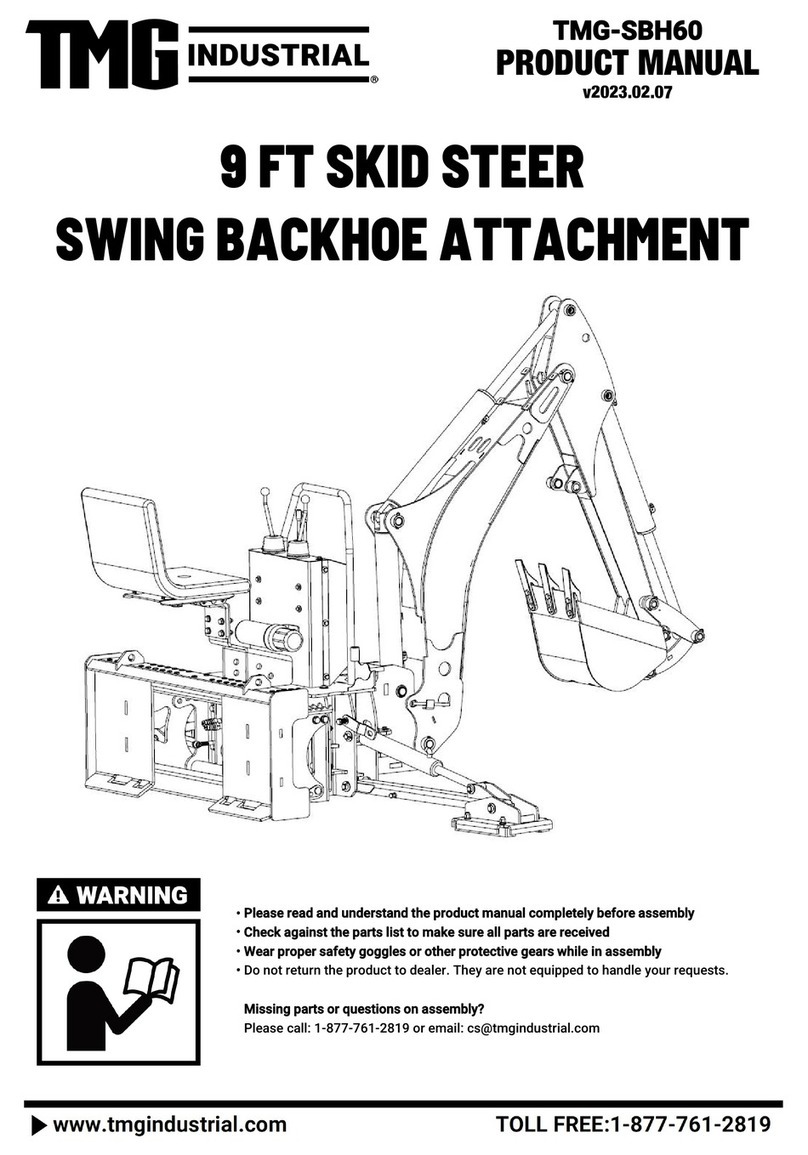
TMG
TMG TMG-SBH60 product manual

Tiger
Tiger TRIPLE FLAIL JD5 M T4F Series Mounting and operating instructions
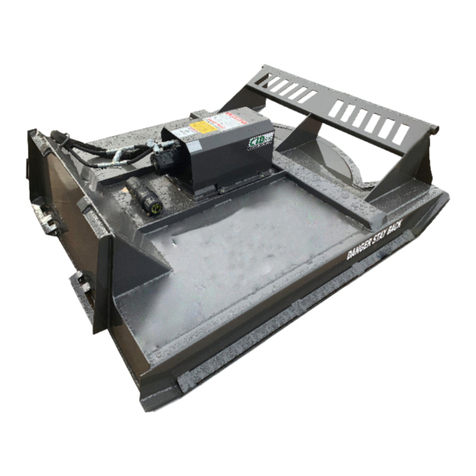
CID
CID 11-20 GPM Series owner's manual
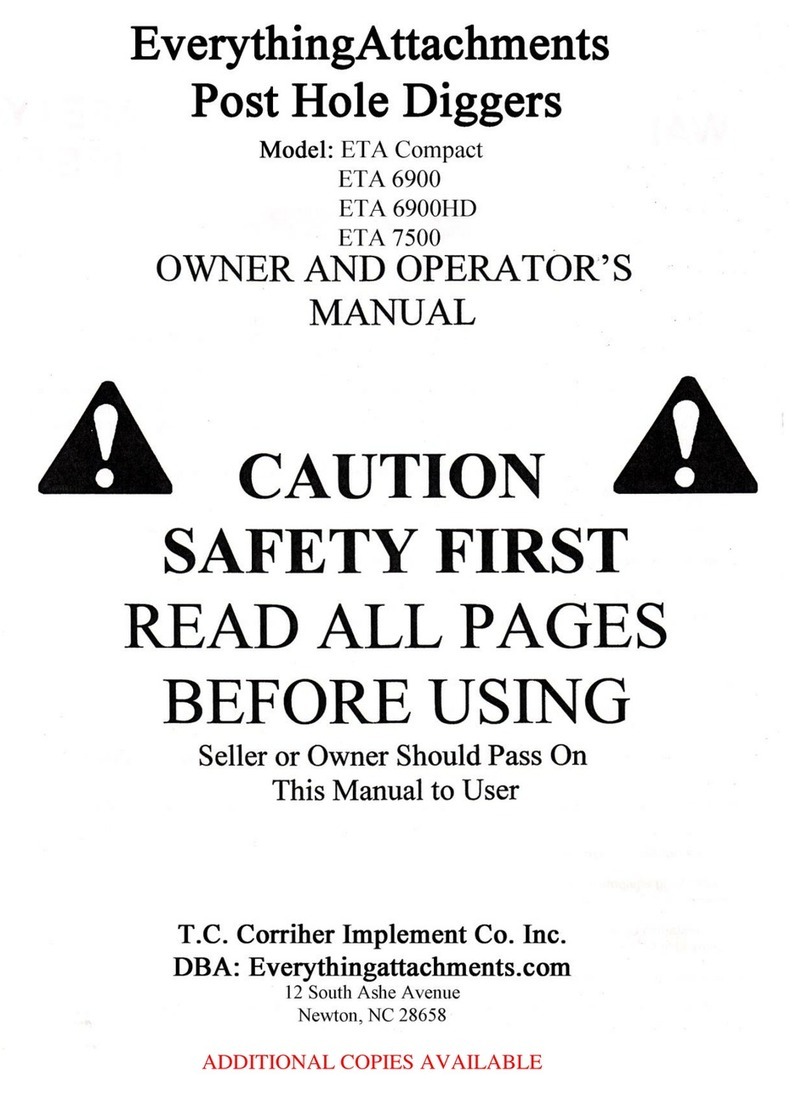
Everything Attachments
Everything Attachments ETA Compact Owner's and operator's manual
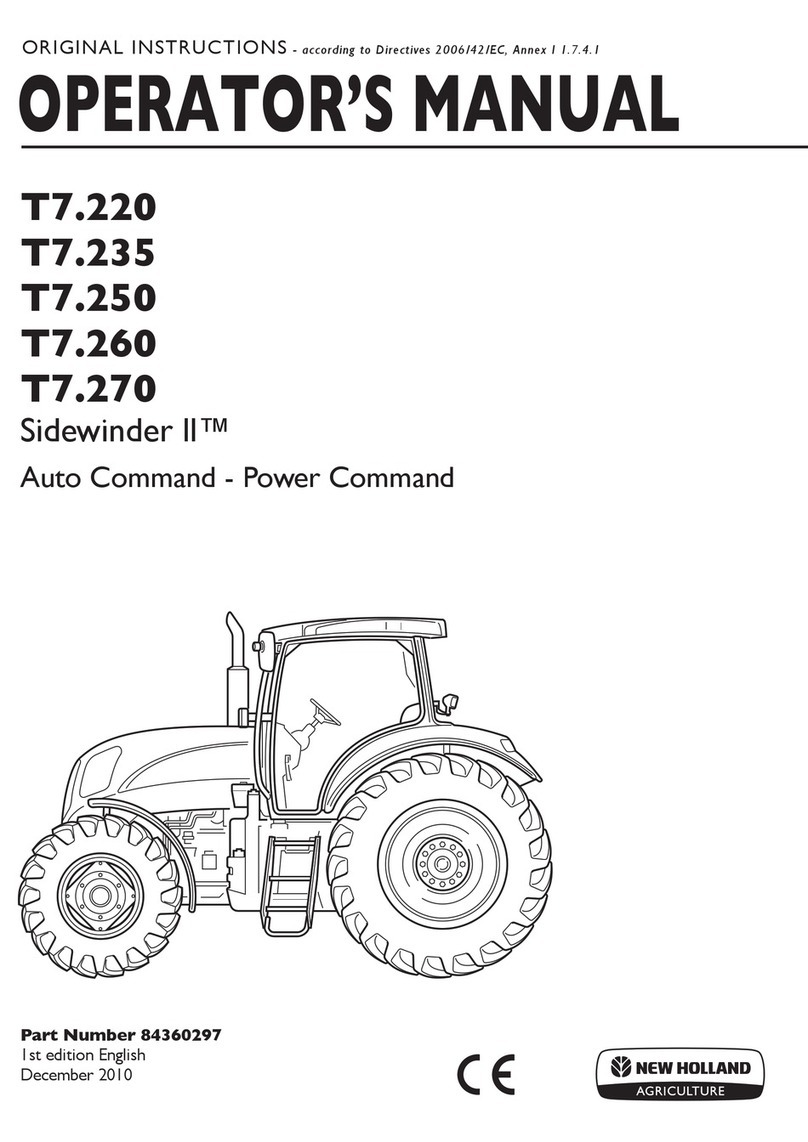
New Holland
New Holland Sidewinder II T7.220 Operator's manual
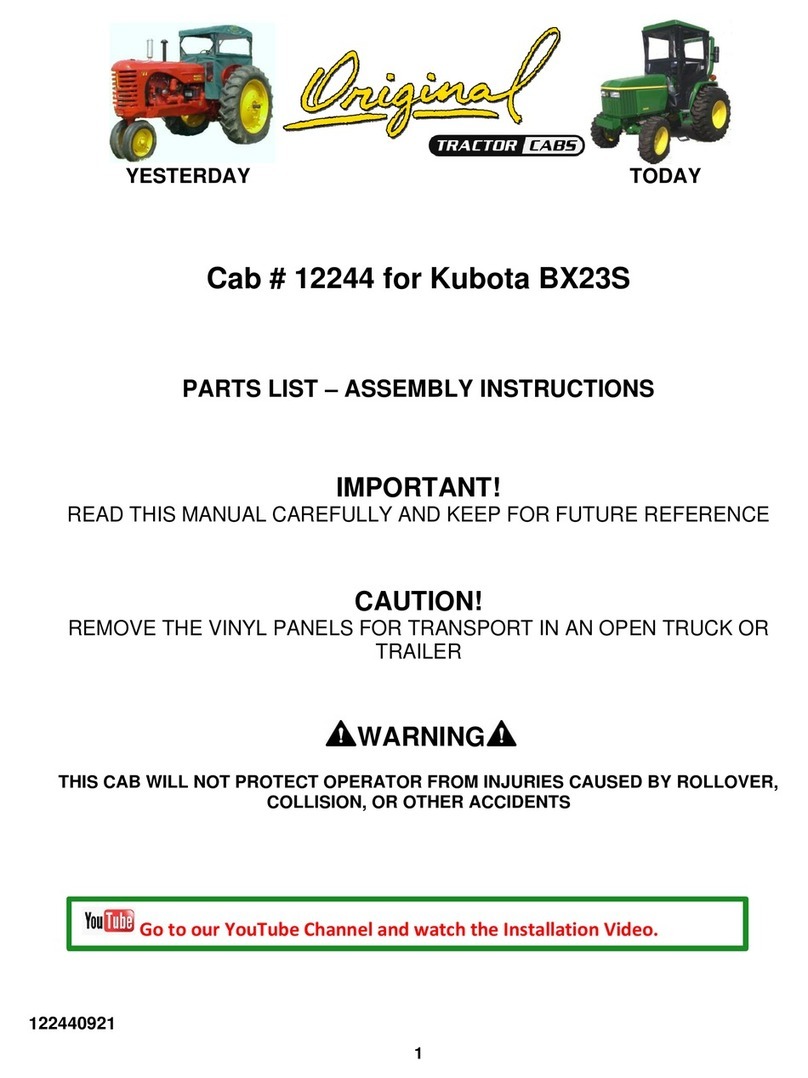
Original Tractor Cabs
Original Tractor Cabs 12244 Assembly instructions
